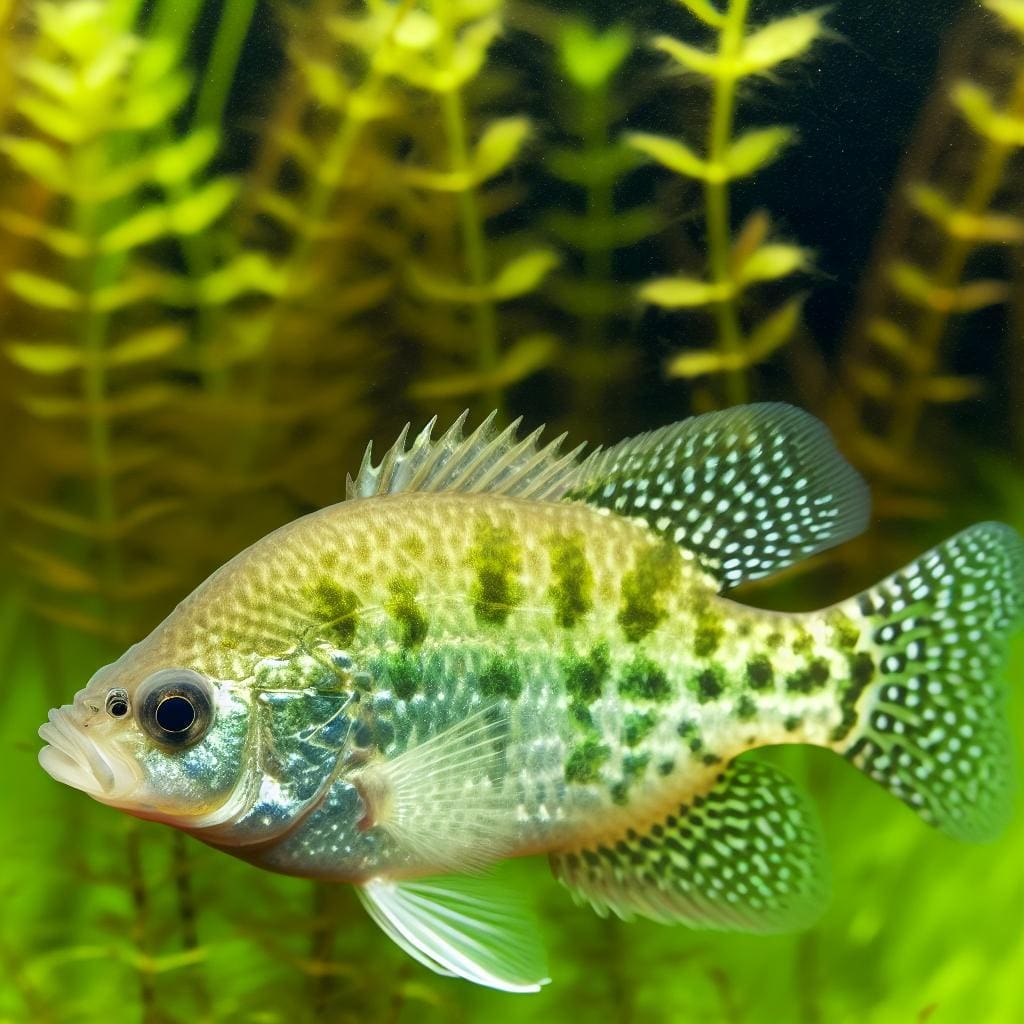Introduction: Crappie
Crappie belongs to the Centrarchidae family and is native to North America. There are two species: the white crappie (Pomoxis annularis) and the black crappie (Pomoxis nigromaculatus).
Conservation Status
Current Status
Both species are currently listed as ”Least Concern” on the IUCN Red List, indicating no immediate threat to their population.
Conservation Efforts
Though not under immediate threat, conservation efforts such as catch and release and fishing regulations are implemented to manage their population.
Statistics
| Statistic | Average | Range |
|---|---|---|
| Length | 7-9 inches | 5-19 inches |
| Weight | 0.5-1 pound | 0.3-5 pounds |
| Average Lifespan | 10 years | 7-15 years |
Distribution
Crappies are widely dispersed across North America, particularly in the eastern US and around the Great Lakes. They are also found in southern Canada.
Habitats
Crappies are freshwater fish and prefer slightly warm water of around 4-20ft in depth. They are commonly found in large ponds, reservoirs, and lakes with sandy or muddy bottoms.
When and Where to See
Crappie are active year-round, but they are most active during the spring and fall when water temperatures are between 58-64°F. Early morning and late evening are typically the best times to fish for them.
Best Fishing Locations
1. Lake of the Woods, Minnesota
2. Kentucky Lake, Kentucky
3. Lake Okeechobee, Florida
4. Lake Eufaula, Alabama
5. Toledo Bend Reservoir, Texas
6. Reelfoot Lake, Tennessee
7. Mississippi River, Mississippi
8. Green River Lake, Kentucky
9. Lake Murray, South Carolina
10. Lake Winnipesaukee, New Hampshire
For those that are unable to access these locations, look for structures or cover where fish may hide such as submerged timber or vegetation in local lakes or ponds.
How to Catch
Crappies are often caught using small jigs, spinners, or live minnows. Techniques include vertical jigging, casting, trolling, or drift fishing.
Identification Guide
Crappies are recognized by their silvery color with several dark lateral stripes. They have a deep body with a large mouth and a slightly forked tail. White crappie tends to have vertical bars along their body, while black crappie has more scattered spots.
Culinary
Crappie is a popular game fish due to its tender white meat, which is lightly flavored and low in fat. Popular ways to cook crappie include grilling, frying, or baking.
Additional Information
Behavior
Crappies are schooling fish. They feed on small fish and aquatic insects, and often feed during dawn, dusk, or at night.
Predators and Threats
Natural predators of crappies include larger fish such as bass and pike, as well as birds like herons and eagles. Overfishing is a human-induced threat.
Cultural/Historical Significance
Crappie fishing tournaments are a popular sport across many states in the U.S., reflecting their cultural significance.
References and Further Reading
1. U.S. Fish and Wildlife Service
2. The IUCN Red List of Threatened Species
3. Florida Fish and Wildlife Conservation Commission

